Making you own vinegar is not a complex process but following the process leads to success… eventually. Unfortunately many articles on the internet are high on praise and short on process.
I read one in the last few days that said get some fresh cider, put it in a container with a cloth over the top and in a couple of months you will have healthy, delicious vinegar. While that is not impossible it is not probable. I have made a lot of homemade vinegar and the process mentioned above always ended in smelly failure for me. It was only when I knew how to take control of the process did I actually make tasty vinegar of appropriate acid strength to be used for preserving and salads.
The two major steps are collecting an acid bactar that throws a good flavor and then putting it in some low-proof alcoholic beverage to turn it into vinegar. If you want to know the bare process yeast turns sugar to gas and alcohol, acid bactar turns the alcohol into acetic acid which is vinegar. Putting out a container of cider to ferment and turn to vinegar is letting nature choose the yeast and the bacteria. You could get two winners but even one loser turns the must into a mess. To read more about making vinegar go here.
Marlberries and I don’t meet too often, about once or twice a year and then usually while I am conducting a class so I don’t have the time to get acquainted better. It’s just not an edible I have “inside” my head, yet. There is also a certain lack of motivation because even at it’s best marlberry is not a great trailside nibble. A complicating headache is there are several malberries of varying quality.
Reportedly found mid-Florida and south I have only seen them in coastal areas such as West Palm Beach on the east coast and near Sarasota on the west coast. The season can vary quite a bit between the coasts as well, as much as two or three months. Around the same time and in the same habitat you can also see Rapanea punctata, one of those mystery pants one finds in the woods this time of year. It looks like a drab cross between a mangrove and a beautyberry. There’s not a whole lot of literature on it so the berries are probably not edible. To read more about the Marlberry and its strange relative go here.
Wintercress grew in a ditch behind an apartment complex I lived in near Sanford, Florida. How did the Eurasian native Nasturtium officinale, there? It came to North America with the Europeans, found a good home, and stayed. Alabama became the epicenter of cultivating it then later Central Florida. Sanford, by the way, is named for Henry Sanford one of Lincoln’s ambassadors. He is called “General Sanford” but be never served in the military. He got the title for donating a cannon to the Union effort. Sanford was, however, big on big farming and for a few decades made that Orlando suburb the place to go in Central Florida. When President Calvin Coolidge came here in 1929 it was to Sanford he went, not backwater Orlando. The city of Sanford had everything: River, rails and road. But it lacked leadership giving Orlando a chance to make its mousey mark. As Coolidge did so did watercress which is why it ended up in the ditch behind the apartment complex in Sanford. The entire area was truck farms and one of their winter crops was watercress. Peppery like nasturtiums it is edible raw or cooked but make sure you get it from wholesome water. Nasturtium by the way literally means “twisted nose.” Where I collect watercress to be eaten raw is about a half mile down stream from the Wekiva River boil (its main spring and headwater.) But there’s a lot of water hemlock around so I have to pick carefully. To read more about watercress go here.
Upcoming classes:
Saturday, November 22nd Mead Garden,1500 S. Denning Dr., Winter Park, FL 32789, 9 a.m.
Sunday, November 23rd, Colby-Alderman Park: 1099 Massachusetts Street, Cassadaga. Fla. 32706. 9 a.m.
For more details click here. You may wonder why I am taking a few weeks off for classes. Three answers, moving one house to another and a couple of surgeries scheduled before the end of the year. Age catches up to everyone. I should resume a full schedule in January.
Eat The Weeds On DVD. My foraging videos do not include alligators but they do cover dozens of edible plants in North America. The set has nine DVD and make a good Christmas gift. Each DVD has 15 videos for 135 in all. Some of these videos are of better quality than my free ones on the Internet. They are the same videos but many people like to have their own copy. I burn and compile the sets myself so if you have any issues I handle it. There are no middle foragers. And I’m working on adding a tenth DVD. To learn more about the DVDs or to order them click here.
On the Green Deane Forum we post messages and pictures about foraging all year-long. There’s also a UFO page, for Unidentified Flowering Objects so plants can be identified. Recent topics include: Winter Time Water Cress, Paleo Goodies, Survival Entertainment, An Annual Evening Primrose, Mushrooms, Acorns All Colors And Sizes, Turn On The Water, Nanoscopy, Puff on This, Lab To Determine Plant Composition, Orange Red Berry, Atlatl, Odd Trees, Grinder for Tough Roots, European Mountain Ash Edible? Curly Dock, Goldenrod of Some Sort, Saffron Crocus Surprise, Cute Little Orange Thing, Indian Strawberry and Kousa Dogwood, and Top Ten Herbs. The link to join is on the right hand side of this page.
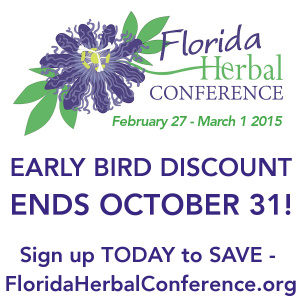 It is time to think about going to the Florida Herbal Conference in late February. I’ve taught there for the last three years and will be there again this year. In fact I plan to spend a lot of time there. It’s a must for all southern herbalists and well as those northern ones who want to escape the cold and study their craft in the dead of winter. It always has interesting speakers and great classes. For more information and to register go here.
It is time to think about going to the Florida Herbal Conference in late February. I’ve taught there for the last three years and will be there again this year. In fact I plan to spend a lot of time there. It’s a must for all southern herbalists and well as those northern ones who want to escape the cold and study their craft in the dead of winter. It always has interesting speakers and great classes. For more information and to register go here.
If you would like to donate to Eat The Weeds please click here.


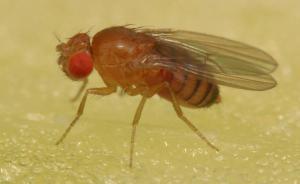
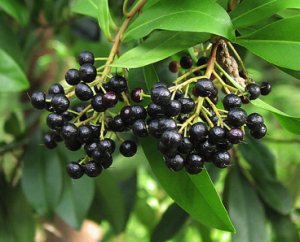
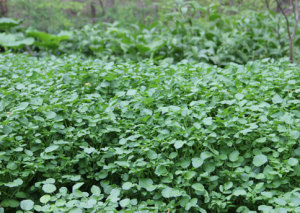
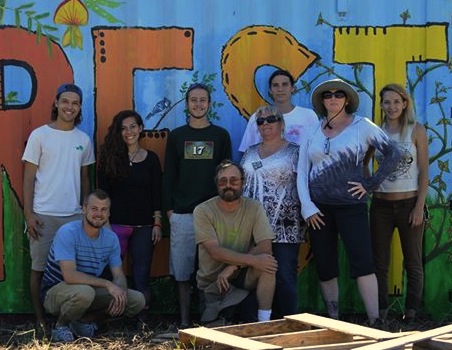
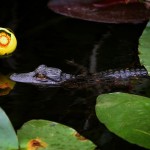
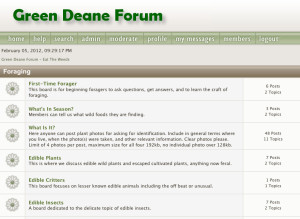

“Puff on This” out of context can be misleading… 🙂
Good thing we all know it’s about recent edible “Puff ball mushroom” foraging successes 🙂
Concerning “Making Vinegar” , please let me report shortly about a graduation project: “Punica Pomegranata: Rotten – Still Fruitful” by one of my best students: Somaia F. al Haimi of Chem. Dept. Sana’a University, year 08/2009. It was due to a remarkable olfactory sense observation of smelling a stronger smell of vinegar (acetic acid) in rotten pomegranate as compared with other rotten fruits. Consequently it was worthwhile to obtain acetic acid from the large quantities of the rotten fruit left after local consumption and export to neighbouring countries. The acid was extracted using an organic solvent of lower boiling point which could be easily evaporated to leave behind the required acid. Discharge of colour was affected by activated carbon made in this lab. from the peel of the same fruit. I hope our case is “possible” and “more probable”. If you won’t mind here are some simple equations pertaining to the making of vinegar via bacteria fermentation: 1/ Oxidative, 2/ Anaerobic
1/ C2H5OH + O2 = CH3COOH + H2O.
It concerns acetic acid bacteria of the genus Acetobacter and a variety of foodstuffs like apple cider, wine, fermented grain, malt, rice, and potato mashes.
2/ C6H12O6 = 3CH3COOH.
It concerns anaerobic bacteria like members of the genus Clostridium (Acetogenic bacteria) which is able to convert sugars to acetic acid directly without the ethanol intermediate.Interrestingly this acetogenic bacteria can make (important to the industrial chemist ) acetic acid from one carbon compounds like methanol, carbon monoxide or a mixture of carbon dioxide and hydrogen:
2CO2 + 4H2 = CH3COOH + 2H2O